The Lowdown on the Lowline, the World’s First Underground Park
A rendering of the completed Lowline. (Image: Kibum Park/Raad Designs/Flickr)
An MTA official walked up to the inconspicuous metal gate on the Essex St. subway platform one winter day in early 2009. Around him, people milled, waiting for the train. They didn’t notice as he slid the lock and led two men down a staircase, through a passageway beneath the tracks, and to the other side. While trains screeched and heaved just a few feet away, the trio entered a dimly lit, abandoned terminal. Tall steel columns surrounded them; column after column extended into the darkness. It felt huge, cavernous. Watching their steps, they waded in farther. On the ground, cobblestones and trolley tracks, remnants from a former heyday, intermingled with miscellaneous detritus: decomposing litter, shards of glass, an AOL startup disc. Graffiti lined the walls, evidence of more recent life forms.
James Ramsey, architect, former NASA engineer, and self-professed “urban archaeologist,” had been researching this place–and, before that, all of New York City’s forgotten underground spaces–for months. He had been looking for the perfect place to execute an idea that had been haunting him for almost a year: how to channel sunlight into a dark, dank spot and transform that place into something totally different–a park. After considering a space under Confucius Square in Chinatown, “some weird thing” under the Brooklyn Bridge station, and all the forsaken tracts of the Second Avenue line, he chose this bottle-shaped site, a trolley terminal abandoned since 1948, about 15 feet high, 600 feet long and 100 feet wide (with its width tapering at its eastern point). Ramsey had envisioned a futuristic environment, inspired by a favorite sci-fi film from his youth, Flight of the Navigator.

The raw space that will become the Lowline. (Photo: Danny Fuchs/flickr)
But now, with the columns dwarfing him, Ramsey felt the power in the place’s old bones. Dan Barasch felt it too. Barasch had learned of his friend’s “bat shit crazy idea” a few weeks earlier and came along for the ride. Now, in the darkness, he was tracing the old tracks, uncovering cobblestones. Farther in, they discovered an old control station still intact. Above them, along the corrugated ceiling, they could see where the trolley’s elevated cables used to run along catenary tracks.
Like Ramsey, Barasch was obsessed with New York City and its hidden potential. In fact, until a few weeks ago, he had been planning a project of his own: a kind of subterranean Guggenheim where art would come and go on subway platforms. But now, standing in the terminal itself, Barasch knew his idea would have to take a back seat.
Ramsey was imagining the ceiling as liquid steel–an undulating, mirror-like mass through which sunlight would filter. He imagined the tracks coexisting with lush greenery, and kids clamoring over mossy rocks to explore the control station. Back in the studio, he turned his vision into a set of computer-drawn renderings that seemed sprung from the pages of Journey to the Center of the Earth: milky light gently sifted through leaves, landing on the heads of children playing and adolescents lounging on grassy mounds.

A rendering of how the finished Lowline space will look. (Photo: Kibum Park/Raad Designs/flickr)
About a year later, in 2011, Ramsey leaked the images to New York Magazine, which published them with a brief article that christened the project “The Lowline.” Half a year after that, Barasch and Ramsey launched a Kickstarter campaign to fund a prototype of the daylighting technology. The images of the underground park were soon all over the Internet. Ramsey and Barasch were depicted in the media as the kinds of visionaries our increasingly urbanized world needs. In a week, Ramsey and Barasch had raised more than $100,000 on Kickstarter.
Caught up in the coolness of the idea, however, few stopped to consider one simple fact: a public space is not a technology start-up. It’s not a product you can ship to supporters once crowdfunding goals are met. The Lowline, which was conceived six years ago, and today exists as a not-for-profit advocacy group striving to make the idea a reality, still has many hurdles to clear before it sees the light of day–the most pressing being to convince the MTA to cede operational control of the site to the City. As imaginative as it may be in renderings, as popular as those renderings may be online, the Lowline would occupy a real physical space, one in which expectations, tensions, bureaucracies, and histories collide.

The Lowline will be located in the Lower East Side. (Photo: The Lowline/flickr)
Located in the Lower East Side, a neighborhood with a long history of ethnic and class diversity, the Lowline would provide 1.5 acres of green space within one of the three densest neighborhoods in New York City. But the Lower East Side, with some 160,000 people living in just 1.7 square miles, has been transformed by development over the last few decades, putting low-income residents increasingly at risk of displacement. No proposal is safe from controversy. No space is without consequence–not even a three-block stretch of derelict underground space forgotten for more than 60 years.
The Lowline may be only the latest example in a long legacy of private-public placemaking in the United States, but the trend has taken a troubling turn in the last few years. Public parks, although starved for public sector money, are experiencing an unprecedented boom in investment from the private sector. Billionaire media executive Barry Diller is willing to donate $130 million to New York City to create a park from scratch, but parks with no private donors, often in poor city neighborhoods, must make do with insufficient municipal and state funds. Architecture critic Inga Saffron describes the result as “a two-tier system of have-and-have-not parks.” You could describe city-dwellers in the same terms.
From the beginning, the Lowline has purported to be a space for the Lower East Side community. But which community? Whom will the Lowline, in reality or in perception, truly be for? And, if and when it actually gets built, what will this thing be under?

Williamsburg Bridge and Delancey Street, Lower East Side, 1919. Kiosks in center go down to underground trolley terminal; larger one to left goes to subway. (Photo: Public Domain/WikiCommons)
About a half a mile west of the Williamsburg Bridge, just south of the Lower East Side’s Delancey Street, there’s a patch of grey concrete adjacent to a sea of parking lots. Brown-gray public housing blocks hulk in the distance. It’s noisy, open, and gray–much the same as it would have been six years ago, when James Ramsey was first considering the site directly below. Those parking lots were a major part of Ramsey’s calculus; after all, sunlight in New York City is an unusual commodity.
Plus, there was no reason to believe those lots would ever be filled. They had stood empty for more than 40 years.
In Manhattan, this vacancy makes no sense at all, and even less in the Lower East Side. That neighborhood has some of the most coveted real estate in all of Manhattan, due in part to the its prime location near the financial district and its “trendy” reputation, but also to the place the neighborhood holds in the American imagination. When waves of immigrants descended upon the United States in the 19th and early 20th centuries, hundreds of thousands of them settled on the Lower East Side, packed into tenement buildings. We may romanticize the area today for its vibrant mix of immigrant groups with their pushcarts and home-country wares, but a century ago it was a breeding ground of poverty and disease–and a major cause of concern for New York City government officials.
In fact, that’s why the trolley terminal beneath Delancey Street even exists at all. From 1908 on, the Williamsburg Trolley carted Lower East Siders from the crowded tenements across the Williamsburg Bridge to the spacious tracts of Brooklyn. Although the trolleys traveled above ground, via an elevated cable, the terminal was placed underground to appease residents, who protested against a “contraption” taking over Delancey Street. The decision had an advantage: the underground terminal linked the trolleys to the city’s burgeoning subway system.
Beginning in the 1920s, however, the city began investing not in trolley cars but in buses, highways, and subway trains. The trolleys ended their bridge service in December of 1948. The Williamsburg Trolley Terminal sat unused, fading quietly into obscurity for decades. Throughout the 1950s, swaths of the Lower East Side that, earlier in the century, had been slated for “slum” demolition were ignored by city planners as people–and resources–fled the city for the suburbs. Those who didn’t have the resources to leave remained in the Lower East Side’s ever more dilapidated buildings.
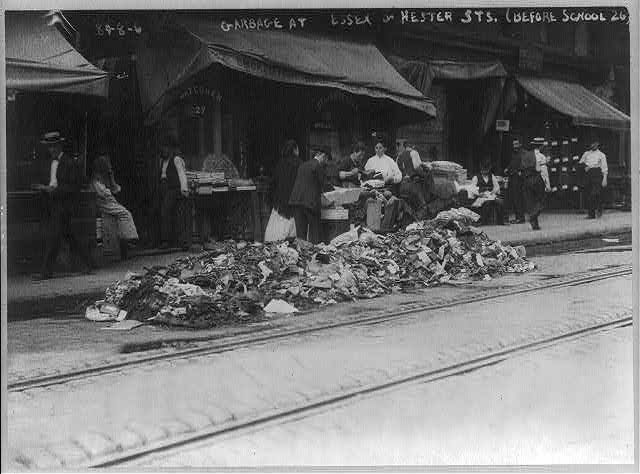
Piles of garbage at Essex and Hester Streets, Lower East Side, during the garbage collectors’ strike of 1911. (Photo: Library of Congress)
Then, in 1965, the New York City government acquired a 20-acre expanse south of Delancey Street. Hoping to demolish the tenement buildings that dominated the 14-block stretch and replace them with new public housing, it named the sector the Seward Park Urban Renewal Area (SPURA). Some 1,852 low-income families–largely Puerto Rican, African American and Chinese–were removed from their apartments. They were promised they would soon be able to return to new, subsidized homes.
By 1967, however, the tides of popular support for “urban renewal”–by this time commonly known as “Negro removal”–had turned. Although some small parcels were developed, the majority of the land remained vacant rubble.
As the city entered the 1970s and bankruptcy, the promised public housing became the least of its concerns. Landlords walked away from near-worthless properties, defaulting them to the city or burning them to collect the insurance. The Lower East Side became a desolate shadow of its former self. But the neighborhood’s very decline generated its growing appeal to a new set of residents. Drawn by low rents, a group of so-called “urban pioneers”–white, single, college graduates, with higher levels of incomes than longstanding residents–began settling in the Lower East Side in the 1980s. These pioneers, who included young professionals as well as artists, resuscitated developers’ interest in the Lower East Side’s housing stock.
But gentrification didn’t come easily to the Lower East Side. With a tradition of community organizing reaching back to the mid-19th century, area residents were unusually equipped to defend their rights. Organizations like Cooper Square Committee, founded in the heyday of urban renewal in 1959, and others, like Good Old Lower East Side (GOLES), founded in 1977, helped propel resistance throughout the ’80s. Newcomers and long-term residents thwarted new developments, invading vacant lots and turning them into community gardens. Squatters, whose ranks included homeless people, low-income residents, artists, and anarchists, moved into abandoned tenement buildings and hung signs out the windows proclaiming, “This Land is Ours!” and “Not for Sale!”
Nevertheless, as Mayor Rudolph Giuliani made it his mandate to “clean up” the city streets, the Lower East Side of the 1990s became an oddly nostalgic simulacrum of its former self. Night clubs, bars, art galleries, and boutiques paid homage to the grittiness of the ’70s, but in a safer, far more expensive guise. In his book, Selling the Lower East Side, scholar Christopher Mele describes the new developments he observed popping up in the neighborhood as gesturing “toward and even mimic[king] the look and feel of the very social elements they threatened to displace.”
As money continued to stream into the neighborhood, the position of low-income residents became increasingly precarious. The Rent Regulation Reform Acts of 1993 and 1997, which allowed landlords to charge market rates as soon as vacancies in their rent-regulated apartments arose, provided landlords with an incentive to kick out rent-stabilized tenants. Not surprisingly, many did. Housing advocates in the area reported all measures of tenant intimidation: heating cuts in the middle of winter, non-stop construction, old-fashioned harassment.
Census data from 1990 and 2000 reveals that the Lower East Side simultaneously lost renters in its lowest income group (a loss of 8,647 very low-income housing units) as it gained renters in its highest. Between 2000 and 2009, the average price of a home in the Lower East Side skyrocketed 321 percent (from $125,326 to $528,413), and the number of residents earning more than $150,000 a year tripled. At the same time, in the span of a decade, about 11,000 rent regulated housing units were lost.
All the while, SPURA’s 20 acres, 14 blocks of precious New York City land, once promised for affordable housing, remained stubbornly, defiantly empty.
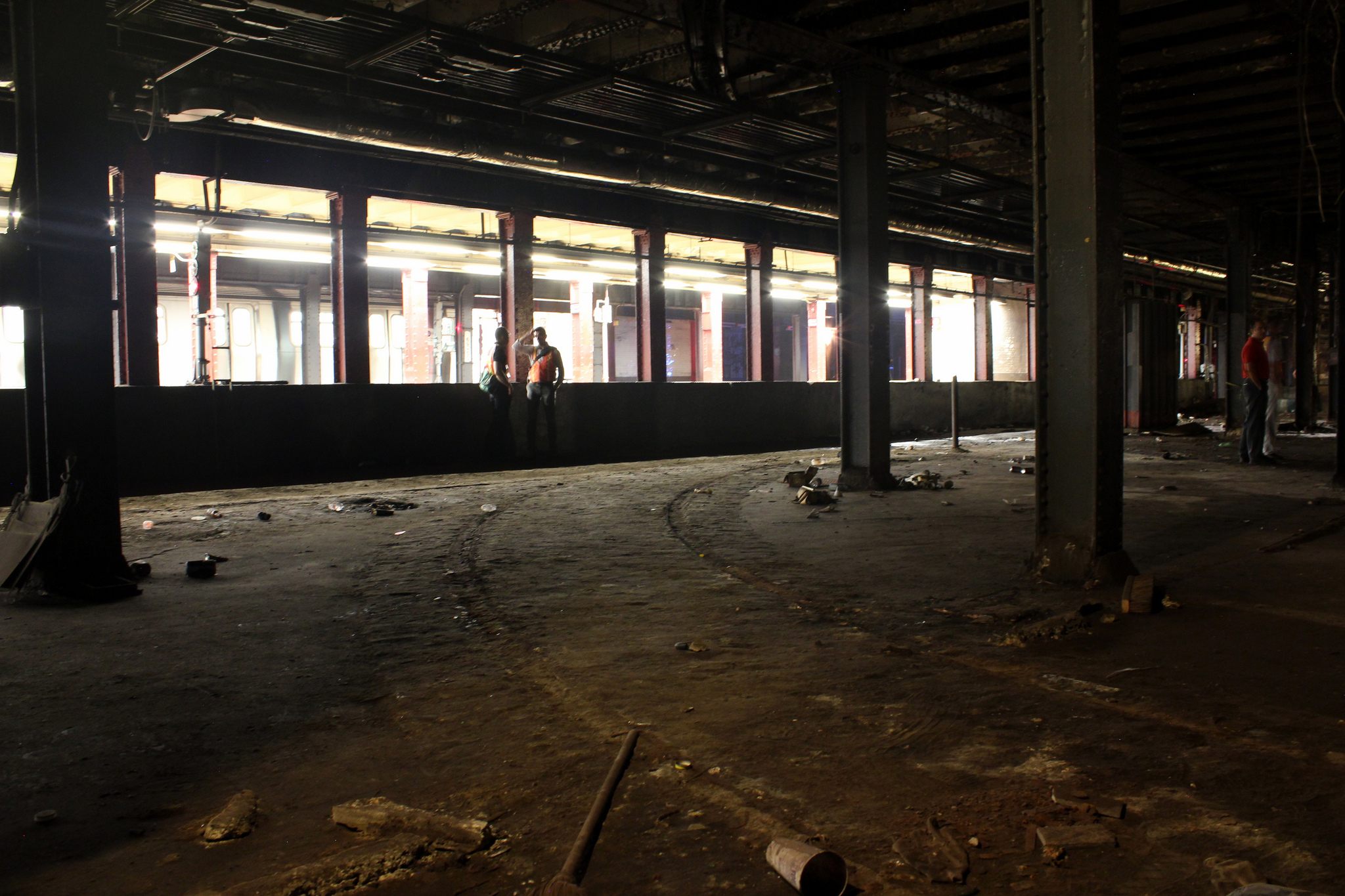
The site of the Lowline in 2012, with railway lines clearly visible. (Photo: The Lowline/flickr)
After Ramsey leaked the Lowline images to New York Magazine – without warning Barasch or anyone else on the team–in September 2011, everything changed. While those involved in the project were initially “furious” at Ramsey for going public at such an early stage, Ramsey knew in his “gut” that the images would put the Lowline on the map, so they could start fundraising in a meaningful way. It did. Looking back today, Ramsey–confident, baby-faced, quick to swear and quicker to smile–has “absolutely zero regrets.” It was just the kind of reckless move that Ramsey had successfully pulled off many times before.
At Yale, the young Ramsey switched to architecture on a whim–and excelled. At 25, armed only with talent, youthful cockiness and some valuable connections, he started his own firm. A few years later, that firm, Raad Studio, boasted a stable clientele of wealthy New Yorkers. Then at 32, Ramsey unveiled the Lowline, setting off an avalanche of interest. A week later, he and Barasch presented their proposal to Community Board 3. Though at that stage the two weren’t seeking any official approval, community board members responded favorably.
The vision had begun as Ramsey’s, but it was now Barasch’s to make a reality. Slightly gawky, disarmingly nerdy, with spiky hair and a perennially unshaven look, the Lowline’s executive director has the air of a young, idealistic professor. Speaking in fully-formed, thoughtful sentences, he explained that since graduating from Cornell University in 1999, he’d just been “trying to find a way to make the world better.” He’d worked for UNICEF in Kenya, then the Bloomberg administration, then Google. His last gig was at a think tank committed to harnessing science and technology ideas for social good. But after years of working for other people’s ideas, Barasch was ready to champion something he could call his own. He left his steady job and salary to turn the Lowline into a not-for-profit–and his life’s work into advocating for its creation.
Barasch’s parents, long-time New York residents, fled from the city in the 70s (as did Ramsey’s), but he never experienced the New York his parents distanced themselves from. For Barasch, who grew up on an apple farm in Massachusetts, New York was where every holiday was spent; the subway, the graffiti, the decay was not a sign of urban decay or crime, but rather vibrancy, creativity, life. The Lower East Side was an important part of his identity.
But getting the community board to agree to any sort of large-scale development plan was never going to be easy. The fighting over the SPURA land directly above the Lowline site had, after all, lasted decades. In 2003, tensions exploded at a community board meeting when some constituents, mostly newcomers and long-term Jewish residents, charged that purely affordable housing complexes on the site would, as speaker put it, “create more ghettos.” The meeting devolved into a shouting match of racial epithets. Police officers removed public housing advocates from the building.
Some of the behind-the-scenes drama was even worse. Assemblyman Sheldon Silver actually spent years surreptitiously blocking projects to develop affordable housing at SPURA, along with his friend William E. Rapfogel, a leader of the Metropolitan Council on Jewish Poverty, the New York Times revealed in 2014. The stone-walling was apparently an attempt to preserve the neighborhood’s Jewish identity. (Rapfogel was subsequently arrested and charged for stealing $7 million in kickbacks in 2013; Assemblyman Silver was indicted for fraud and extortion in 2015.)
In early 2009, the community board established a SPURA taskforce, with representatives from all of the Lower East Side’s warring factions, to produce a set of development guidelines and put this long quarrelsome history behind them at last. Almost instantly, old tensions flared. Housing advocates insisted: 100 percent affordable apartments on the site. Others countered: zero. In 2010, the city hired a facilitator to wrangle a way to consensus.
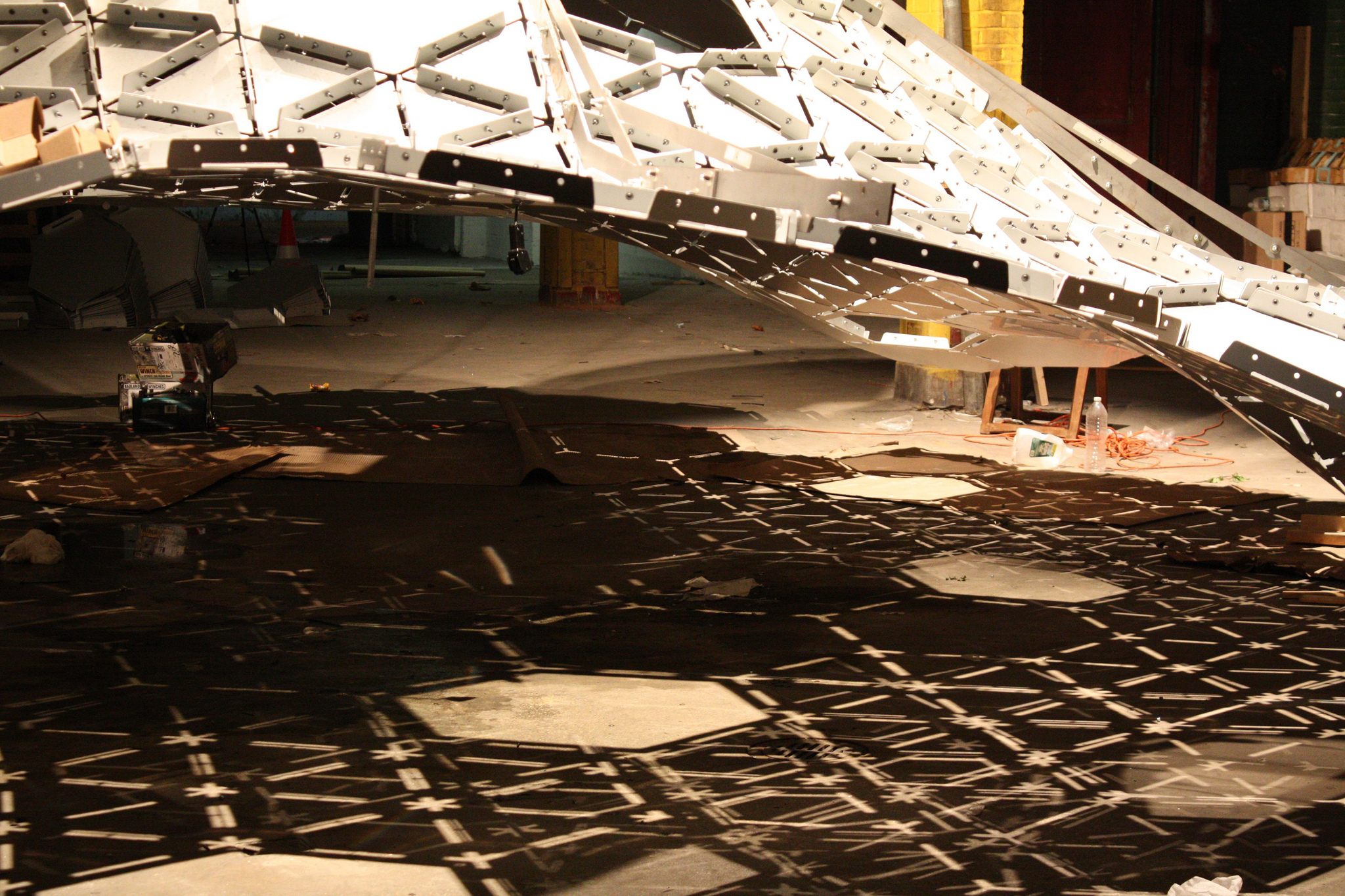
A close-up of the hexagon design at the Lowline. (Photo: Lizzy Zevallos/Lowline)
Finally January 25, 2011, the day of the vote, arrived. Today the future of a site that had sat fallow for 43 years would be decided.
While Barasch and Ramsey were scheming, dreaming, and rendering their vision for a forgotten trolley terminal, the community taskforce were furiously debating the fate of the swaths of land directly above. The drafted guidelines recommended a mixed-use site, with 50 percent of the housing earmarked for permanently low- to moderate- income residents.
Damaris Reyes, one of the taskforce’s most vocal housing advocates and GOLES’ executive director, was stuck: between progress and principle, making history and staying true to her community. A public housing resident, the no-nonsense 44-year-old was all too familiar with the ways development pushes out low-income residents unaware of their rights. She was determined to prevent SPURA from a similar fate.
Her constituents wanted 70 percent of the site to be devoted to affordable housing–at a minimum. “The day that the vote happened, I got to tell you, a lot was going on, people were getting calls, lobbying. We kept saying no, we gotta see more [housing], we gotta see more, we gotta see more.”
For three and half hours, the vote hung in the balance. The pressure was huge: would housing advocates block the guidelines, after two years of work and 40 years of stinging history?
Or would they rally, last minute, to the plan?
When the question was finally called, the task force approved the plan. People jumped up, clapping, crying.
For Reyes, it was a bittersweet moment. She wanted to celebrate the wins she and others had fought for, to take part in the historic resolution with her friends and colleagues. But she alone had voted no. With or without her, for good or bad, the development plan was moving forward.
In March 2012, The New York City Economic Development Corporation (NYCEDC), the public corporation that takes projects from the conceptual to the concrete, initiated the requisite public review process. SPURA was really happening.
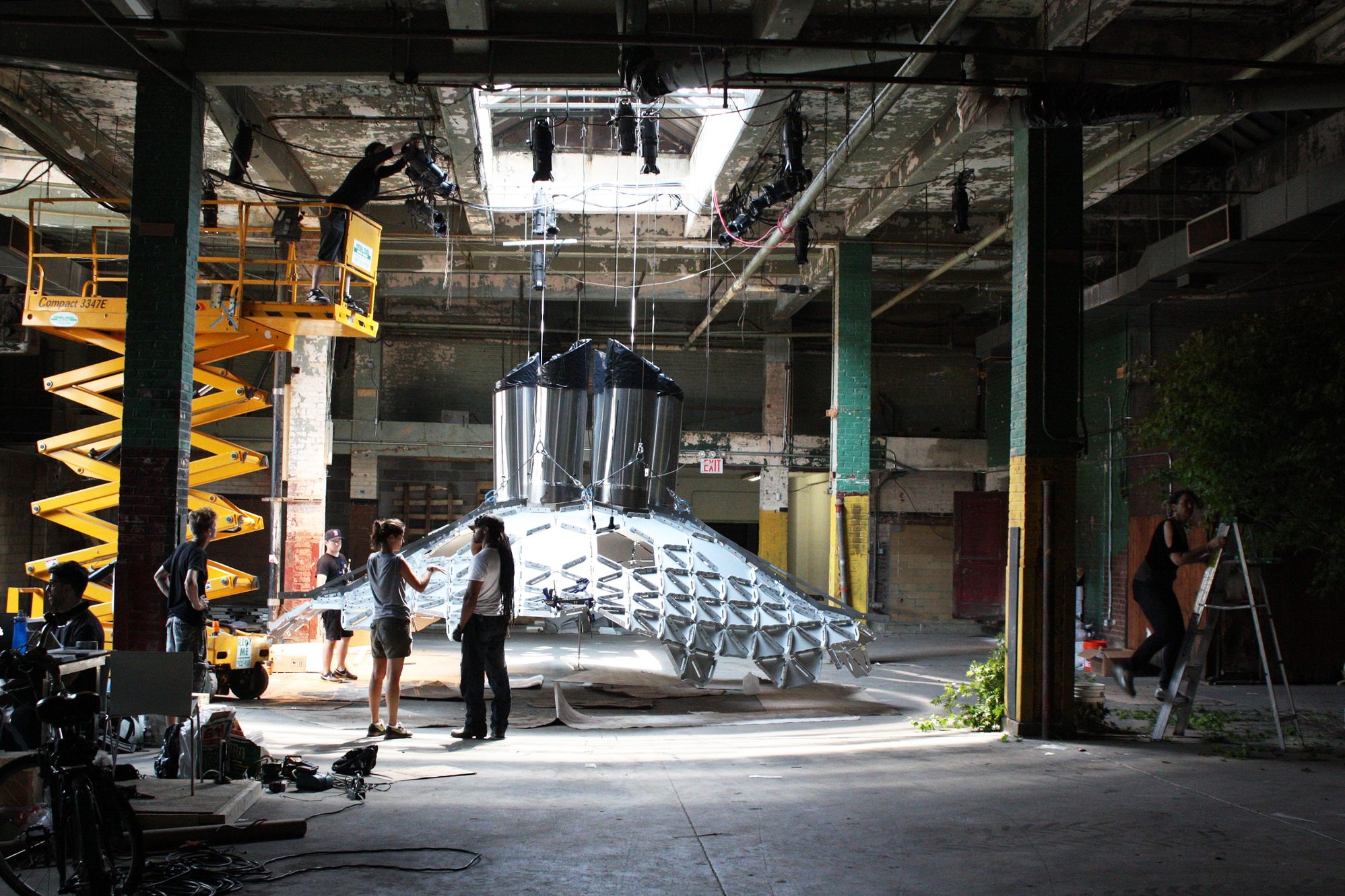
The Lowline is expected to open in 2020. (Photo: The Lowline/flickr)
Ramsey and Barasch had a serious problem. The site chosen for the Lowline had, for decades, been bounded on the north by a wide, two-way street and on the south by parking lots–thus it had lots of direct exposure to sunlight. Now that the NYCEDC was committed to developing SPURA land, it was clear that the top surface of the Lowline would soon sit under the shadow of new construction. Would their project be able to work in this new urban landscape?
One thing was certain: they needed the cooperation of whatever was going on above.
Ramsey’s original concept was to use a series of collectors, resembling large sinks or satellite dishes that would sit above the site and capture sunlight, funneling it into a tube. The light would then be irrigated underground and released into the space via a distributor. But the access to a counted-upon light source wasn’t their only challenge at hand.
In April 2012, Ramsey and Barasch commissioned HR&A Advisors, the well-respected (and highly connected) consulting firm that helped get the High Line off the ground, to create a planning study. The report would answer three vital questions: was the Lowline feasible? Would it be profitable? And, all importantly, how much would this thing cost?
While the report was being generated, Ramsey enlisted the help of the engineering firm Arup to sort out the technical side. They used software to determine how shadows would affect the surface of the Lowline site on every hour of every day of the year. By February 2013, they had a solution: placing collectors with tracking mechanisms in specific elevated areas. Like giant sunflowers, the collectors would follow the sun’s path and redirect the captured light to a few concentrators directly above the Lowline site. From there, the light would be channeled underground.
HR&A’s report arrived a few months later: yes the Lowline was feasible, yes it could be profitable, but it would likely cost between $44 and $72 million to make a reality.
The report described the Lowline as a new kind of hybrid, a fusion of public space and cultural facility, a culture park. The eastern side, where the site tapers inward, would be dense with flora; the western side could, once columns were removed, become a 5,000 square foot “plaza” for events or performances. HR&A estimated that although operating costs for the Lowline would run anywhere from $2.4 to $4 million a year, they could offset those with revenue from food and beverage concessions, event rentals, ticketed events, sponsored programs, and donations.
In fact, the report estimated that the Lowline, as a venue for culture and arts, would increase SPURA land value by $10 to $20 million, and benefit New York City to the tune of $15 to $30 million (30-year net present value), once sales, hotel, and real estate taxes were figured in.
When it came time for developers to compete for the SPURA bid in the summer of 2013, the Lowline understandably piqued interest. “We were basically courted by each of the developers.” Barasch recounted. “They came to us and said, OK, you have this project right below ours, let’s talk. [… It’s] attracted all this attention, all this press, it seems to have a fun vibe, a fun brand attached to it, how could the Lowline potentially be a part of this package?” Barasch and Ramsey convinced each of the seven bidding teams to include the Lowline in its proposal.
On September 17, 2013, in the final months of Mayor Michael Bloomberg’s term, the chosen developers for SPURA were unveiled. Their proposed plan, called “Essex Crossing,” is a massive mixed-used development that will create 250,000 square feet of office space, a 15,000 square foot park, 1,000 apartments, three blocks of market space (some underground, providing a potential connection point for the Lowline), a community center, school, rooftop farm, bowling alley, and movie theater.
The project also announced a timeline: Phase 1 of the construction would begin in early 2015, while Phase 2 (including the sites directly above the Lowline) in 2018.
For better or worse, Barasch and Ramsey had a timeline, too. They knew that to create a sense of urgency, they should jump on SPURA’s momentum and do their best to dovetail with Phase 2’s construction. The winning team was keen to work with them, but ultimately the decision of whether or not the Lowline could go forward was not in the developers’ hands.
The countdown was on: five years to convince the MTA to transfer control of the site to the city, to raise $60 million, to draw the community to their side, and to make their dream, now four years in the making, a reality.

Light filters through to the Lowline. (Photo: Kibum Park/Raad Designs/flickr)
The first public sally against the Lowline came in October 2014, just one week after New York City Deputy Mayor Alicia Glen announced her support for the project, calling it “the city’s next great public space.” Kerri Culhane, a community organizer writing for The Lo-Down, a neighborhood-focused blog, disagreed in strong terms, saying it was more of a “corporate atrium” than a park, and predicting it would be dingy in winter, unwelcome in summer and, like the High Line, designed mostly with tourists and real estate developers in mind. The opinion piece included a damning but true assertion: “No mechanism exists for the community to offer input on what this publicly owned space might be.”
For their part, the Lowline team hadn’t wanted to begin a community-informed design and planning process until it knew the Lowline was viable. In Barasch’s words: “We didn’t want to waste people’s time.” Although the Lowline now had the support of Mayor Bill de Blasio’s administration, the slow-moving, byzantineMTA (which answers not to the city, but the state) was still a major bureaucratic obstacle.
Yet a few weeks later, Barasch and Ramsey decided the project was now far enough along for them to embark on a community outreach process. After establishing a community outreach program for neighborhood youth (the Young Designers Workshop), they approached Hester Street Collaborative, an organization that assists communities in using design as a tool for social change, about helping them open new channels of communication with Lower East Siders.
Executive director Betsy Maclean had her reservations about taking on this client. If the Lowline were programmed only for big parties or fashion shows, if it were “in truth or in feeling–in reality or in perception–not for members of the community,” that would be a problem. But a solvable one. More troubling was the project’s systemic problem:
“The way development usually happens, especially in low income neighborhoods, is that a developer or the city comes in with their design, plops it in front of the community and says, ‘What do you think?’ Or not even ‘what do you think’–‘deal with it.’ Then, the community has to somehow find the resources–or not at all–and mount a campaign in reaction to something that’s most likely 80 percent down the road to being complete. That’s messed up, obviously, and incredibly inefficient.”
Maclean speaks quickly–more so when she’s passionate about her words (which is often). “In a true planning study, you don’t go in with a foregone conclusion,” she exclaims. “You go in saying, let’s look, could this be beneficial? Because maybe it couldn’t.”
In other words, those $15 to $30 million Lowline-related dollars that might beef up New York City’s coffers may not prove helpful to real residents. The project’s obvious, above-ground parallel is the High Line, the remarkably popular re-use project that transformed an abandoned elevated railway into a parkway. The High Line was funded not just with government money and private donations but also by selling “air rights.” Developers subsequently built far higher buildings around the High Line than zoning laws would typically have permitted. This set in motion major change in the area’s built environment: auto repair shops and mom and pop stores continue to close as luxury apartment buildings with stunning High Line views continue to rise.
Barasch calls the High Line founders “the most compelling social urban entrepreneurs of our generation.” But, he adds, “we can also learn from some of the concerns people have around the High Line. How rooted is it in the community? Is it a space for tourists or for people who live nearby? Is there such a thing as being too popular (meaning too crowded)? All these kinds of questions I think we can learn from and try to fix.”
Ramsey believes that programming will also allow the Lowline to “avoid a lot of the pitfalls” of the High Line. Indeed, the renderings of the project only hint at what the space could be. “What matters is what you use the space for, what it becomes, how does it shape people’s lives,” Barasch says. “We want the space to be a public amenity, we want light and plants and trees. Outside of that we haven’t figured it all out. We don’t know how it will be used. That’s what we want the community to help us do.”

A vision of The Lowline. (Photo: Kibum Park/Raad Designs/flickr)
In many ways, the Lowline, a “culture park,” is a culminating symbol of what many of our parks are becoming: cultural institutions, with owners setting the policies and regulations, rather than public spaces where the presumption of freedom once prevailed. The Lowline will be a not-for-profit operating entity that will raise private funds for and administer a public space.
The Lowline is part of a wider phenomenon of private-public partnership that has been taking over the U.S. since the 1980s, when, due to budgetary limitations and political constraints, local governments and parks departments became less able to maintain city parks. Many places in New York City that look and feel public, like the famous Zuccotti Park where “Occupy” took place, are in fact privately owned. Today, lines between public and private spaces are decidedly ambiguous.
From the beginning, the Lowline team has benefitted from considerable connections in the private world. Even before Barasch was involved, Ramsey enlisted his friend Ravenel Boykin Curry IV, the managing director of the hedge fund Eagle Capital (which manages assets worth about $24 billion) as a Lowline co-founder. Although Curry is hardly ever mentioned in media coverage of the Lowline (his role today is more that of interested observer than active participant), it was Curry who brokered an initial audience with the mayor’s office so Ramsey could learn of the underground spaces available to him.
Curry is just one of the powerful figures the project has attracted; a quick glance at the Lowline’s board of directors reveals seed investors, heads of development firms, and wealthy entrepreneurs. The project’s “Anti-Gala” fundraisers attract a high-profile crowd. The last was hosted by Spike Jonze and Lena Dunham, and tickets to this year’s cost over $1,500 a pop.
To date, the Lowline has received only $8,500 in public funding from City Council members Margaret Chin (who represents District 1 in lower Manhattan) and Daniel Garodnick, to finance the Lowline Lab, an exhibit that opened this month. There, the site tests the capacity of sunlight technology to support plant life. The machinery comes from a South Korean company that, Ramsey recently discovered, had already worked out the light transfer he was trying to achieve.
“In an ideal world,” Barasch said, the Lowline “would be entirely funded by public sources. When you have public funding for things, you have a sense of legitimacy that’s coming from an elected official.”
The Lowline has raised about $1 million almost entirely from private donations. However, as stated in the HR&A report, the Lowline plans to “aggressively pursue public funding sources,” not only to achieve “legitimacy” but also to soothe private donors who “have expressed reasonable reluctance to commit funds until they can be assured the project has the support of public partners–both in terms of site control and public funding.”
The Lowline estimates that about $7 million of its public funding will come from tax credit programs; the rest will potentially come from city, state, and federal allocations. Considering the significant political support the Lowline has already garnered, these allocations seem likely. However, vying for public funds requires entry into a zero-sum game. In this scenario, the Lowline must compete with other community organizations for resources in the Lower East Side, most notably the neighborhood’s existing, under-funded community gardens and parks.
At its most fundamental, the Lowline would not be a park, but rather a contained green space with a handful of access points. According to Barasch and Ramsey, it’s a project that preserves an artifact and speaks to America’s origin story. They present it as an economic generator for local businesses and future development, a boon to the New York City brand, and a true community amenity.
All of these claims, to one degree or other, are true. However, as with all private-public spaces that earn the favor of philanthropists and governments, the proposed benefits often mask the potential inequalities underneath.
The Lowline will transform a former trolley terminal, meant to get people out of the Lower East Side, into the opposite: a vortex that brings people in. Yet for thousands of residents, the Lower East Side remains just as much a place to escape from as ever. While new residents and businesses try to move in and some residents happily cash in and move out, many public housing residents struggle to keep their homes and communities, even as underfunded maintenance, continued violence, and social stigma make daily life ever more daunting. Perhaps the only thing that has changed since How the Other Half Lives is that the two halves now coincide in closer proximity–and the built reality of the Lower East Side belies the other half’s existence.
That’s why SPURA required such a belabored, protracted process. The development plan was the result of many different stakeholders, high-income and low, coming together to lay claim to the land. While the result may be far from perfect, it represents the community’s combined wishes for certain amenities, the inclusion of a considerable number of affordable housing units, a cultural center–in other words, it represents the beautiful realization of quid pro quo.
The Lowline did not spring from the collective minds of the community. But visionary projects seldom do. After all, if it weren’t for the coolness factor, the craziness of an idea sprung from one unusual mind, the Lowline would never have generated all the media interest and support it has. Government officials and investors have lined up behind the project, Hester Street Collaborative is studying how the site can benefit the community, and–most important of all–the MTA seems, at long last, amenable to site transfer. The MTA’s Director of External Communications, Adam Lisberg, wrote in an email: “We do not object to [the Lowline’s] conversion to a park project as long as the city and other stakeholders support the project and it does not impose a financial burden on the MTA.”
As it becomes increasingly likely the Lowline will become a reality, there is one important thing to keep in mind: the resources the Lowline could bring to the Lower East Side should not remain underground.

The Lowline Lab. (Photo: Philip Lange/The Lowline/flickr)
The only thing that differentiates the nondescript metal door on the side of a clay-red building on a busy street in the Lower East Side, are two bluntly stenciled, thick black words: LOWLINE LAB.
The door gives way to a dark warehouse-turned-exhibition space. Blown up poster boards detail every step of the Lowline’s history. One: the complexity of the solar harvesting technology, which is aided by mirrors that reflect sunlight during the day and auxiliary, electric light at night. Another: the diversity of plant life in the Lab, chosen especially to thrive in these unusual conditions.
One poster shows what would be the Lowline’s “iconic” entryway: an awning that resembles a sheet of concrete peeled up from the street, like a piece of paper by one of its corners. It offers a peek into the enticing, glowing garden below and activates the street above, in an homage to the historic configuration of Delancey Street. A historical photograph of the street at the turn of the 20th century shows people, trolleys, cars, and carriages competing for space. The Lowline, the posters suggest, makes reparations: it provides the green, public space this neighborhood has needed for centuries.
Turn the corner, and there she is. Lowline in beta. This is not the kind of park the 19th century Lower East Siders craved–this is a uniquely 21st century breed of space.
Lush plants cover the concrete floor and hang from the ceiling, like living stalactites. Above them, but below the industrial ceiling, hangs a canopy–not undulating and wavy, as the renderings suggested, but more like a patchwork quilt of gray, geometric sand dollars. Amongst the flora, young city-dwellers take selfies and Instagram pics; a few exclaim with surprise that pineapples grow not on trees but on bushes. An older lady strikes up a conversation with a young couple, new to the neighborhood: “They say it will take another five years or so. I’m 75 now, so…” She lets the meaning hang between them.
A family with strollers considers the scene and, somewhat befuddled, quickly moves on. A small camera crew for CBS News interviews a visitor, then turns to the odd contraption that hangs in the middle of the oasis. It’s like a Matisse mobile, but instead of colorful, whimsical shapes, are three unremarkable round mirrors. This is how the sunlight, filtered down from the rooftop via a few glowing fluorescent tubes, is dispersed equally onto the plants below. The difference between the clear, solar light filtering in and the yellow, artificial light emanating around the exhibit is palpable.
When the solar light briefly disappears, and the exhibit darkens, a father explains to his son, pointing upwards: “There goes a cloud!” The boy looks up. Of course, under the canopy, there is no cloud to be seen.


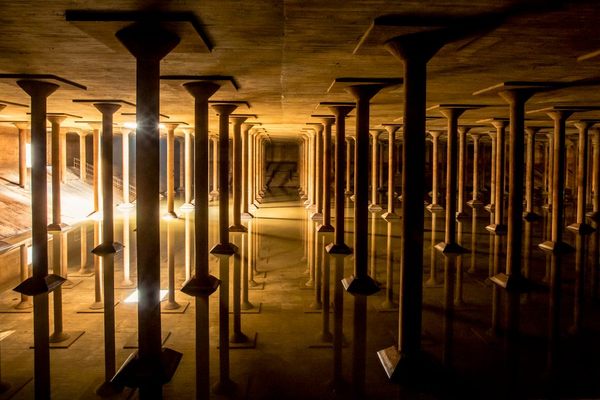
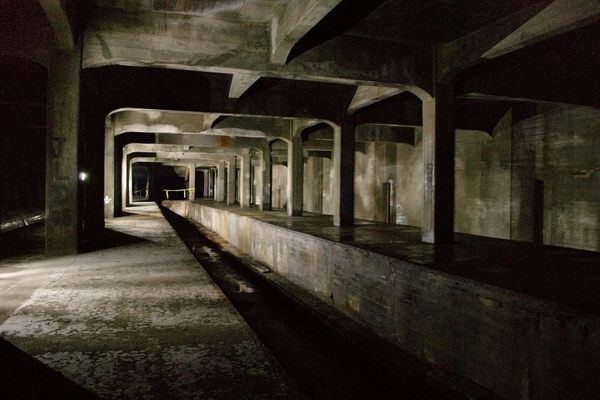
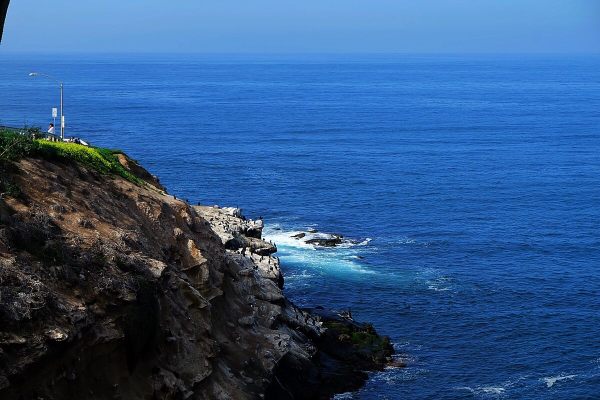

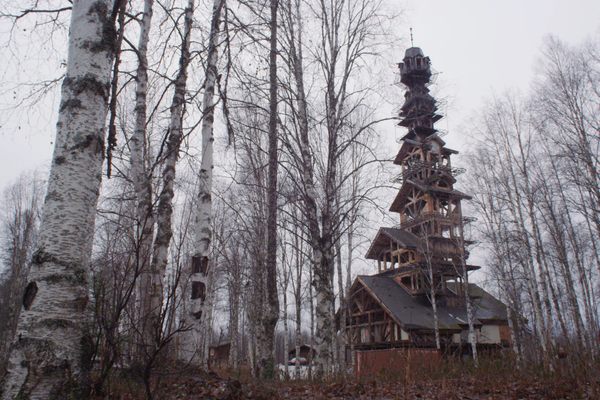

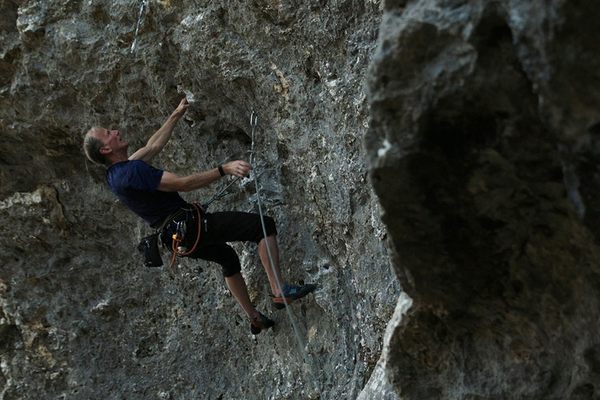





Follow us on Twitter to get the latest on the world's hidden wonders.
Like us on Facebook to get the latest on the world's hidden wonders.
Follow us on Twitter Like us on Facebook